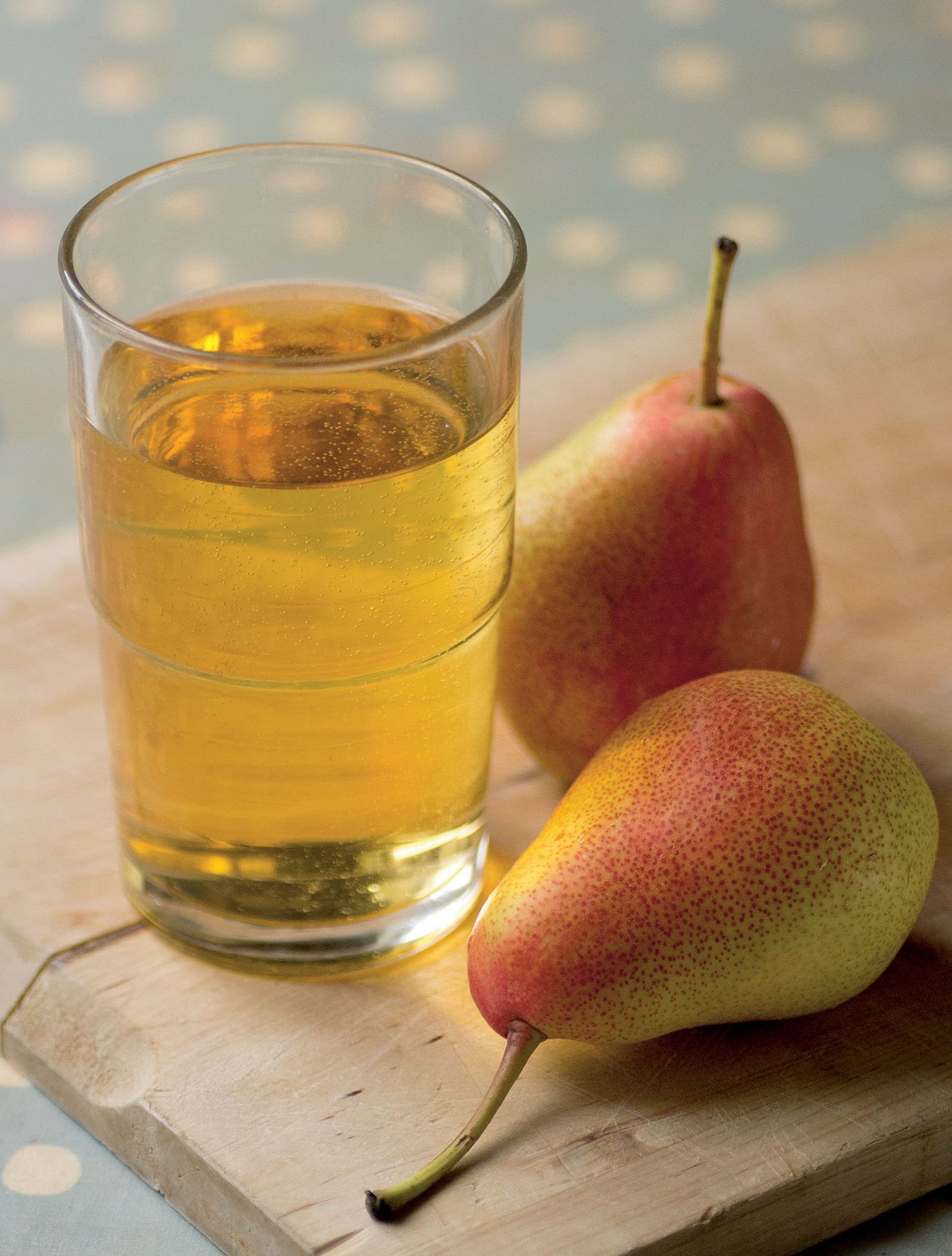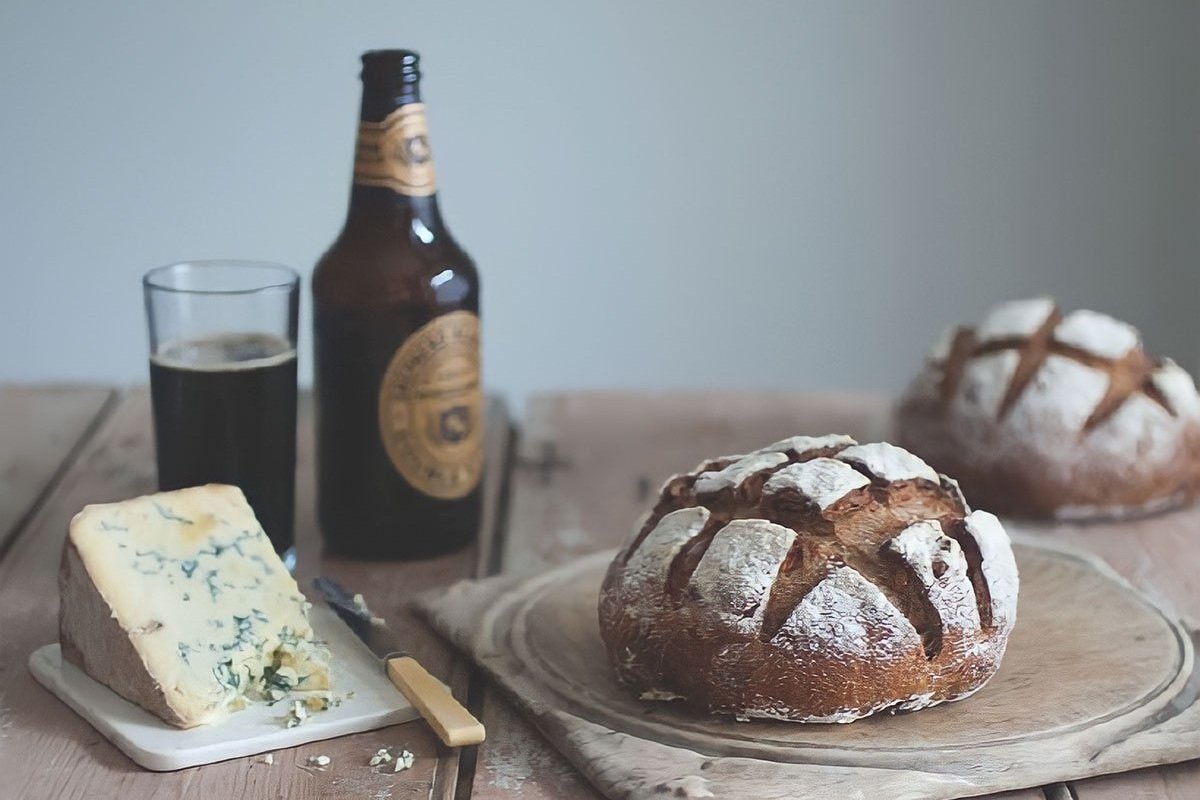Advertisement
ckbk's guide to brewing your own drinks
16 May 2024 · Discover ckbk
To celebrate the release of a brand new edition of Brew it Yourself by Nick Moyle and Richard Hood ,we asked award-winning drinks journalist Laura Hadland to look at the panopoly of beverages you can make for yourself with recipes from ckbk’s virtual bookshelves. Let ckbk be your guide as you ferment and infuse your way to a delicious drinks cabinet, making use of your garden’s (or local market’s) excess produce along the way…
Since 2008, the Two Thirsty Gardeners have been turning their hands to home brewing, using their surplus harvest and foraged ingredients. Now Nick Moyle and Richard Hood have released an updated 2024 edition of their classic recipe book, Brew It Yourself, sharing their expertise in an accessible and creative way that will tease the inner home brewer out of even the most reticent beginner.
Brew It Yourself is the culmination of Nick and Richard’s life-long fascination with brewing and fermenting. Both grew up in home-brewing households, which has given them many opportunities to experiment and perfect their art. Now they are sharing that knowledge and debunking the myths that discourage people from starting their own fermentations at home.
The book gives a fantastic insight into how to forage ingredients for free, as well as giving alternative methods using shop bought fruits and plants. With a detailed brewing bible like this at your side, you won’t be able to resist delving into the world of homemade beverages - including a fantastic new section covering low and no-alcohol brews.
What is the secret of Scrumpleflower cider? And what exactly does one do with a Rumtopf? Nick and Richard are ready and waiting with the answers.
Wild Food
The Two Thirsty Gardeners are following in the footsteps of some real giants in the foraging and fermenting world. Roger Phillips’ 1986 classic Wild Food details every aspect of the bounty available to the budding forager. He gives a fantastic recipe for a classic Dandelion Flower Wine, which is perhaps the easiest and most abundant ingredient to find in the UK. There’s something so evocative about having to pick your ingredients on a sunny day, although of course that is when they will be at their glorious, yellow best. Gently fermented with orange juice and rind, dandelions create an unusual tasting wine that is hugely refreshing on a warm day.
I also adore Roger’s Spruce Beer recipe, which draws inspiration from the classic spruce concoctions popular in Germany. This is a beer which packs a real punch of flavour, thanks to the fragrant spruce tips and a healthy dollop of treacle. It can be fermented and matured in just under 2 weeks, so the recipe doesn’t require a huge commitment of time or space.
Sparkling Drinks
If you enjoy a taste of the exotic, home fermented drinks are a wonderful route to travel. The Thirsty Gardeners offer up a beautifully vibrant Finnish Spring Mead known as Sima. It is made with raisins which will conveniently bounce to the top of your bottles when the fermentation is complete and the drink is suitably effervescent.
Take further inspiration from Scandinavia with Asa Simonsson’s book Fermentation. It draws on her Swedish upbringing to deliver flavours that are quite novel to my British palate but are increasingly finding popularity here. Two of my favourites are the festive flavour of Asa’s Spiced Winter Kvass and her refreshing summery Raspberry and Pear Kvass. Kvass is a cereal-based drink that is low in alcohol and has a delicious balance of sweet and sour that really quenches your thirst.
Kvass has its origins in Eastern Europe and has been popular for over a thousand years. It has recently gained more traction in the US and UK because of its high probiotic content, which is thought to be a helpful tonic for digestive issues.
For a more unusual approach to kvass, try Stephanie Thurow’s Sugar Pumpkin Kvass recipe from Can It & Ferment It. Bubbly and light, this drink is an excellent way to use those extra squash from your veg box delivery. Or forget about kvass altogether and fire it up with those Thirsty Gardeners and their Chilli Ginger Beer - it will set pulses racing!
Honey
Using honey as the basis for an alcoholic drink is a tradition that can be found in many parts of the world. In Brew It Yourself it is put to good use in the recipe for Honey Ale; an enticingly amber coloured ale with a complex floral aroma.
When I think of honey beverages, I think of mead. David Bowers’ twist on the traditional interpretation is published in his Real Irish Food. His Apple Mead recipe is an unusual and highly effective contemporary take on some very traditional Irish flavours. But be warned, this punchy drink is not for the faint hearted! I could not think of a better nightcap to share with friends.
Sharing characteristics with European mead but with the addition of geysho leaves, mes is produced and widely consumed in Ethiopia and Eritrea. This delicious ferment can be easily recreated in the home thanks to Saba Alemayoh’s excellent book, Tekebash & Saba which gives an evocative insight into Saba’s family life growing up in Tigray, the most northerly state of Ethiopia.
Cider
The Two Thirsty Farmers started their homebrewing journey with cider, made from apples begged and borrowed from neighbours. They give an excellent basic Farmhouse Cider recipe to get you started, but Brew It Yourself shows how their years of experimentation has taken them to new levels. Their Pear & Ginger Cider is a real revelation. Not to be confused with a true perry - pear cider - it gives you the option of using sweet pears which are much easier to get hold of than the tannic perry pear varieties. This is a classic flavour combination, but it’s definitely worth having the experts on your side to get the quantities right and balance those flavours.
Of course, once you’ve made some cider, you may want to spice it up a little when you serve it. Phyllis Pellman Good’s Fix-It And Forget-It Big Cookbook is crammed full of wild inspiration for getting creative with mulling your cider. A seasonal treat is her Spiced Cranberry Cider which will bring fantastic aroma into your home as well as great taste!
Liqueurs
Fantastic cupboard staples with a long shelf-life, liqueurs are a great option to make yourself to serve as the basis for a wide range of cocktails, or on their own as a digestif. They are also usually quick and simple to make (although possibly slow to mature!) because they simply rely on macerating the key ingredients in a base spirit.
With endless opportunity for experimentation in the world of homemade liqueurs, it is here that The Two Thirsty Gardeners’ innovation and flair really jumps off the page. Their Damson & Fennel Vodka is a glorious idea, and throws open the way to some serious experimentation with autumnal damson desserts too. The Beech Leaf and Honey Liqueur really intrigues me as well. Beech leaves are not something I’ve experimented with, but Richard and Nick promise us that once macerated in spirits, an otherwise elusive nutty taste rises forth. This is one recipe that I just have to try for myself.
NOTE: You may not realise that it is not legal to distil alcohol in the UK without a special licence. This means that base spirits inevitably have to be shop-bought. However, making naturally fermented alcohol for your private consumption is allowed, which is why we have so many great recipes available!
If nutty flavours really hit the spot for you, then try Ann and Franco Taruschio’s Walnut Liqueur in Leaves from the Walnut Tree. This recipe requires 40 days of maturation, where the green walnuts and other flavourings infuse properly with the grappa. But you’ll find the results speak for themselves.
Wine
The notes that The Two Thirsty Gardeners give to explain the rudiments of home winemaking in Brew It Yourself are really all you will need to get started. Their accessible descriptions of the process and equipment are some of the best summaries I have seen on the subject, and they have some truly innovative recipes. Pineapple Wine and Lemon & Lime Wine were both utterly new ideas to me, both equally captivating.
You might think that their recipe is simply a homebrewers skit on the Italian liqueur Limoncello (and there is a recipe for Limoncello in the liqueur section), but this is even more interesting, using layers of flavour not just from the citrus fruit but also the addition of black tea and raisins to bring depth and to balance out the sharpness.
When you are done with that, you can draw more inspiration from Roger Phillips and have a go at his Red Clover Wine. After the five day fermentation period, this light wine will be ready to drink immediately!
I am also a big fan of Andrew Pern’s seasonal Plum Wine recipe. It is a very straightforward process that lets the fruit shine. A big bonus if you are fortunate enough to have a glut of plums from your own tree, or generous neighbours who like to share.
Switchels and shrubs
One of the most delightful recipes in Brew It Yourself is the alcohol free Switchel. This historic alcohol-free recipe resembles a shrub and was also known as a “swizzle” or “haymaker’s punch”. It certainly has a rich tradition in the United States, but some commentators think that, because of the ingredients involved, its original roots may lie in the Caribbean. Rum has been an optional addition in many of the older recipes, but today the trend is to keep this refreshing drink alcohol-free and thirst-quenching.
The traditional recipe infuses sweet and acidic ingredients with fresh root ginger, but I like the twist that Matt Frazier and Stepfanie Romine have added in their No Meat Athlete Cookbook with the Grown-Up Kool-Aid Switchel. Hibiscus is a very on-trend flavour at the moment, and adding its sour tones to the complexity of a switchel is just a delightful idea.
Laura’s selection of home brew recipes
More features from ckbk
Ramona Andrews digs into ckbk’s mushroom recipes, to celebrate the addition of Fantastic Fungi
Laura Hadland on the many culinary used for the darkest of beers. It’s not just for St Patrick’s Day!
Kumud Gandhi, author of The Garlic Story, explores garlic in all its many forms including wild, fermented, smoked and slow-cooked
Sign up for ckbk's weekly email newsletter
Advertisement












